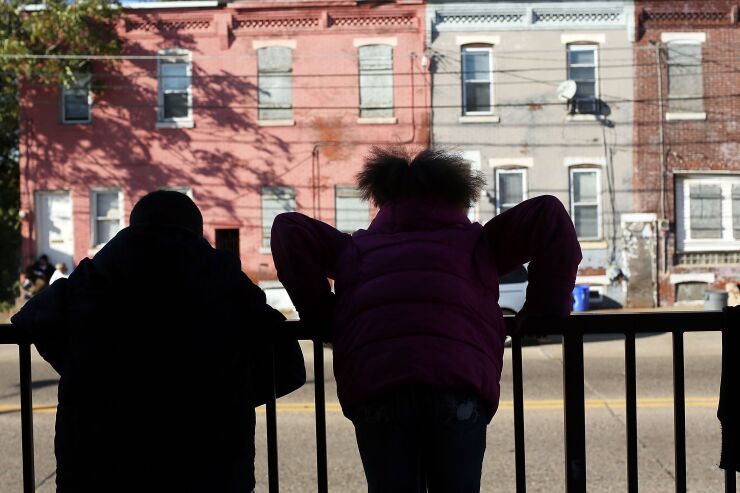Support is rising among policy makers to address America’s child-poverty crisis, which is getting worse as the pandemic drags on.
More than 8 million Americans — including many children — fell into poverty during the second half of last year, exacerbating the racial and income inequalities that are holding back the U.S. economy.
As lawmakers debate

One year after the virus broke out in the U.S., the economic recovery continues to be uneven for minorities and the poor. Some Americans, like homeowners and those with investments, are flourishing; others, such as workers in sectors hit hard by pandemic closures, are struggling. Economists warn this
“The fact that we have millions of children every year languishing in poverty is holding us back as a nation,” said Melissa Kearney, an
Congress provided some temporary aid last year to help families during the pandemic. Now, lawmakers have introduced several measures that would expand the so-called child tax credit, which currently provides parents $2,000 per child annually.
President Joe Biden, as part of his massive economic stimulus package, wants to spend $120 billion to increase the amount of money families receive in child tax credits this year. Nearly 150 House Democrats have introduced legislation that takes Biden’s plan further and makes the monthly payments permanent. Like the existing tax breaks, high-income families will not be eligible under the Democrats’ plan.
There’s even bipartisan support to expand the program in some way: Senator Mitt Romney has his own proposal, which would give even more money to parents with young children. His proposal is unlikely to advance in a Democrat-controlled Congress, however.
“The pandemic did not just shine a light on child poverty, which has existed for generations, but it has exacerbated it,” Rep. Rosa DeLauro, a Connecticut Democrat sponsoring the House bill, said on a call with reporters Monday.
Still, lawmakers remain at odds over how big the payments should be and how long they should last. Critics, including some Republicans, say expanding tax breaks isn’t the best way to address child poverty and warn it’ll increase the U.S. deficit.
“That is not tax relief for working parents; it is welfare assistance,” GOP Senators Mike Lee, from Utah, and Marco Rubio, from Florida, said in a statement earlier this month about efforts to expand child tax credits and make them monthly.
COVID-19 pushed the child poverty rate to 16.6 percent in December from 15.3 percent right before the pandemic began, according to an
The University of Maryland’s Kearney
Families are falling behind even as other parts of the economy recover. Job losses have been highest among low-income workers and those with children, and parents are increasingly dropping out of the workforce to care for their kids as day-care centers and schools remain closed.
Increasing the existing child tax credits, and distributing them monthly instead of a lump sum annually, would do a lot to help struggling families pay monthly expenses until the pandemic is over, according to economists. The money could be used to pay for necessities, like food, as well as childcare costs.
As a result, fewer children would suffer from food scarcity and other things that can hold them back, according to Diane Schanzenbach, director of the Institute for Policy Research at Northwestern University.
Poverty impacts Americans starkly along racial lines, with 26 percent of Black children and 21 percent of Hispanic children living below the poverty level compared to 8 percent of white children, according to the University of Maryland’s Kearney.
The U.S. lags many rich counties in investing in programs for working parents and child education and that’s why poverty rates are much higher, according to
“Child poverty is a major problem,” said





